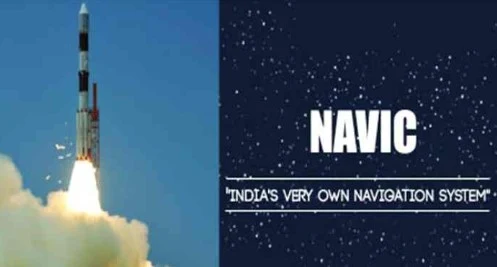If its rival has adopted a satellite-based navigation system, namely Beidou, then India is indeed behind with China in this segment. But it's not India if you just give up and sit idly by. With a persistent intention to develop independence in the strategic sector, then after mastering rocket and satellite technology, India began to boost its own satellite navigation system.
If the United States has GPS (Global Positioning Systems), Russia has GLONASS (Globalnaya Navigatsionnaya Sputnikovaya Sistema) and China has Beidou Navigation Satellite System. India also cannot remain silent, so since the last few years, the Indian Space Research Organization (ISRO) is developing what is known as NavIC (Navigation with Indian Constellation).
Although it basically has the same main function as GPS, NavIC (for now) has different specifications from the GPS satellite model. As is well known, GPS is made by the US government and can be used anywhere in the world, while NavIC is currently only available in India and covers an area of only 1500 square kilometers.
NavIC was originally designed to provide higher location accuracy not only for general use, but also for military operations. Its history began when the US Government did not provide useful GPS information to any other country, in this case India.
As in the case of the Kargil War that occurred between India versus Pakistan on the border in 1999, at that time India had requested GPS data regarding the area, but the US had refused it, because the US was not happy with Pakistan.
India then realized how important it was to have a domestic satellite navigation system and as a result, the NavIC idea received further support from the government.
Although similar to GPS functions, NavIC has different characteristics. GPS is known to make use of geosynchronous satellites, the position of which is not regulated in relation to any particular place on Earth.
In contrast, NavIC relies on geostationary satellites, which are positioned according to a specific location. NavIC satellites always orbit above a certain fixed point on the Earth's surface because they follow the path of the planet. Geostationary satellites are in higher orbits, which means they carry the advantage of less drag, but also a weaker signal.
Most people assume that GPS has an accuracy of up to 20 meters, so NavIC can achieve an accuracy of up to 5 to 10 meters. In addition to accuracy, NavIC is claimed to have a faster latch-on time, or Time To First Fix (TTFF) in technical terms. This implies in busy urban areas with multiple tall buildings and obstructions, NavIC can identify your location faster than GPS.
The NavIC project was initially approved in 2006 with a budget of US$174 million. It was supposed to be completed by the end of 2011, but it didn't work until 2018. There are now eight NavIC satellites in orbit.
The use of NavIC is currently still limited, such as being used to track and convey information about natural disasters, provide emergency alerts to fishermen traveling to the deep sea, where there is no domestic network connectivity, and monitor public traffic in India.
Quoted from firstpost.com (28/9/2022), the Government of India has encouraged smartphone vendors to include features for the NavIC navigation system in newly released smartphones that will be marketed in the country in the coming year.
Follow Daily Post on Google News to update information quickly. Thank you for visiting our website..!! Don't forget to share any information to help develop our website..




